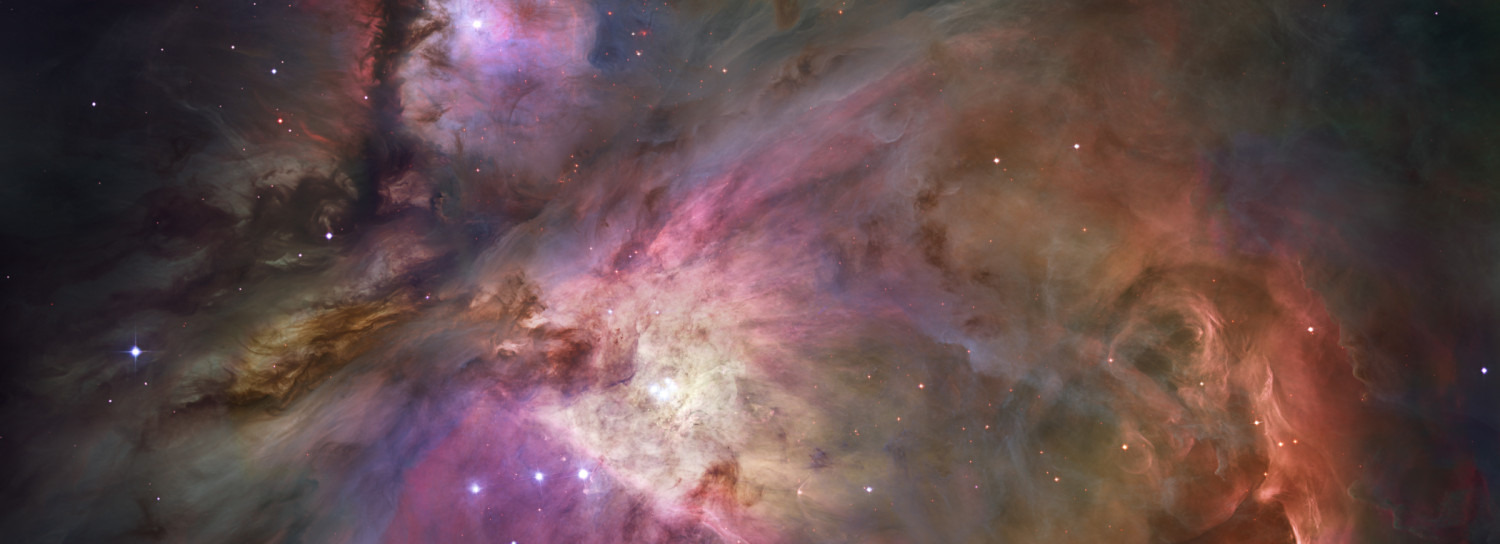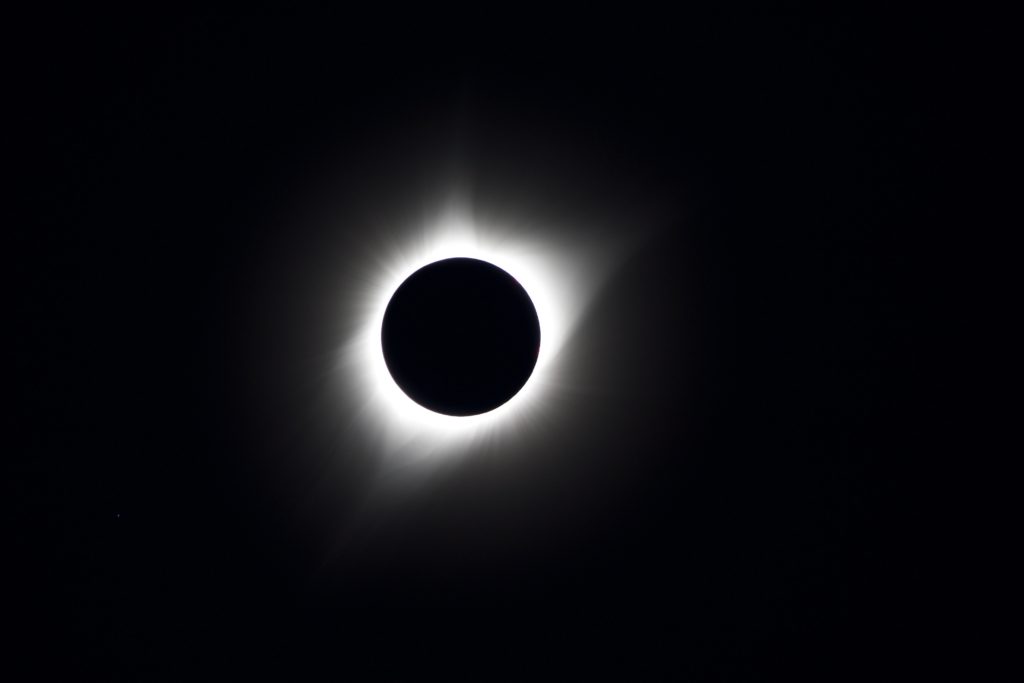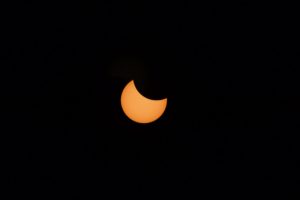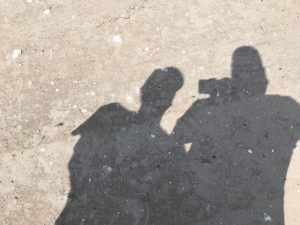It has been five days now, just over 120 hours, since Totality slid across the United States of America. Since a Total Solar Eclipse travelled coast to coast from Oregon to South Carolina, treating tens of millions of both ordinary people and those with a more scientific inclination to a potentially once in a life time sight. The 70 mile wide path crossed over major cities, small towns, and rural areas, across the liberal northwest, the conservative plains, and into the Deep South. The shadow cast down on men and women, people of all skin colors, all orientations, all faiths, and multiple nationalities. The Moon’s slightly elliptical orbital dance with Earth and our sun showed no preference to anyone other than those humans who made the effort to travel into the zone of Totality.
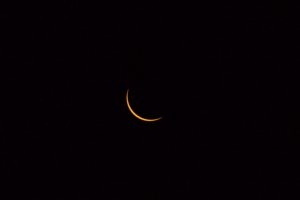
The Great American Solar Eclipse will go down on record as likely the most observed, photographed, reported on and social media covered astronomical event in human history. I am fortunate and lucky enough to have gotten to see it.
People have said that seeing a total solar eclipse can be life changing.That it can connect you on an almost spiritual level with nature, and indeed, with others around you. I won’t go as far as to say that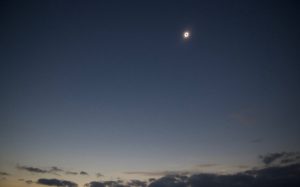 its impact on me was personally that profound. But it did have an impact. The elemental force of nature that we as humans are completely unprepared for in our evolutionary experience, of a dark shadow racing towards you. Of a sudden temperature drop, of the wind dying to calm. Of the animals around you altering their behaviors. Of the sky going dark, not gradually, not even at the speed of an ocean sunset, but as if someone had flipped a light switch. I experienced that, and it was unlike anything in my life could have fully prepared me for.
its impact on me was personally that profound. But it did have an impact. The elemental force of nature that we as humans are completely unprepared for in our evolutionary experience, of a dark shadow racing towards you. Of a sudden temperature drop, of the wind dying to calm. Of the animals around you altering their behaviors. Of the sky going dark, not gradually, not even at the speed of an ocean sunset, but as if someone had flipped a light switch. I experienced that, and it was unlike anything in my life could have fully prepared me for.
I did have some distractions with me. I had brought two cameras with, and set up to shoot both some wide angle and zoom shots of totality. Part of the rare nature of a total eclipse is the ability for Earthlings to witness first had the outer atmosphere of the sun, or the corona. The wispy streams of light emanating from behind the dark circle of the Moon resemble some sort of magic fire. Something no photograph can do justice, but something that photographs are very useful for studying, as the corona is constantly changing.
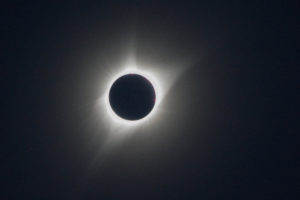 As this was my first total solar eclipse, towards the end of the partial I made the decision to focus on naked eye viewing. We as a society increasingly view every single part of our lives through the lens of screen, and while I know I’d have to glance at the cameras a couple of times, I didn’t want to watch the entire eclipse on the back of my DSLR. So I adjusted the settings to what I guessed would be the best for the soon to be dark environment on my 100-400mm zoom lens equipped Sony and on the mirrorless Fuji that I had put a 12mm manual focus wide angle Rokinon on the front of. And when totality hit, I had remote triggers for both cameras in my hands. All I did was look up and press the buttons. I viewed the vast majority of Totality with my eyes, looking away briefly to zoom the Sony out to 100mm for a couple of shots, to pick up my iPhone which was shooting video, and as I picked up the solar filter for the Sony and adjusted the ISO for additional partial eclipse shots as the Moon prepared to slide once more off the sun. Out of about two and a half minutes, I probably “missed” 20 seconds or so of it. Somehow most of the totality photos I shot turned out halfway decent. Assuming I travel to see the 2024 eclipse, which in some areas will reach over four minutes of totality, I will likely devote more time, maybe a minute, to camera management.
As this was my first total solar eclipse, towards the end of the partial I made the decision to focus on naked eye viewing. We as a society increasingly view every single part of our lives through the lens of screen, and while I know I’d have to glance at the cameras a couple of times, I didn’t want to watch the entire eclipse on the back of my DSLR. So I adjusted the settings to what I guessed would be the best for the soon to be dark environment on my 100-400mm zoom lens equipped Sony and on the mirrorless Fuji that I had put a 12mm manual focus wide angle Rokinon on the front of. And when totality hit, I had remote triggers for both cameras in my hands. All I did was look up and press the buttons. I viewed the vast majority of Totality with my eyes, looking away briefly to zoom the Sony out to 100mm for a couple of shots, to pick up my iPhone which was shooting video, and as I picked up the solar filter for the Sony and adjusted the ISO for additional partial eclipse shots as the Moon prepared to slide once more off the sun. Out of about two and a half minutes, I probably “missed” 20 seconds or so of it. Somehow most of the totality photos I shot turned out halfway decent. Assuming I travel to see the 2024 eclipse, which in some areas will reach over four minutes of totality, I will likely devote more time, maybe a minute, to camera management.
We pulled off to view the eclipse just south of the town of Alliance NE. Given that our hotel rooms were on the other side of the state in Lincoln, our location helped make Monday a very long day. Totality did cover Lincoln itself, and a wide path along our route from there west. But overnight and early in the morning, the forecast for much of Nebraska was horrible. Clouds were predicted across 2/3’s of the state, including a good portion of the path of totality. It would improve during the day, but nothing was at all certain. Except the northwest corner of the state – Scottsbluff, Alliance, etc. The forecast for up there was basically good. I was content with travelling a few hours west, where it would clear off first, settling for the Grand Island area and crossing my fingers. After all, our party did have our 78 year old father with us, who I knew might not appreciate 10-12 hours in the car. My younger brother, however, much more comfortable with cross country travel, made the argument that since we had already made the effort to travel somewhere that we COULD see the eclipse, that we should continue the effort and go the extra distance. He actually argued for Wyoming, a good seven or eight hours one way. I vetoed that but decided we could push for Alliance.
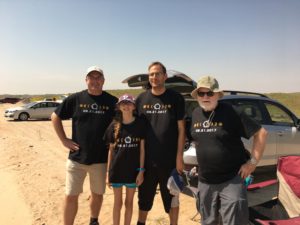
We left shortly after 0400 and arrived, after several stops, at our viewing site about 90 minutes before totality. Right after the partial had started. Alliance itself was jammed full of visitors. Our perch was on the side of Hwy 26 south of town, parked on a construction road next to the main highway. With a few thousand other people up and down the road. A guy in the gas station after the eclipse mentioned a sheriff’s deputy had estimated a crowd of about 60,000. In a city normally housing a population of under 8,500. With Hwy 26 back up for miles, we fled back towards Lincoln via NE Hwy 2 east, a two lane rural highway that led us through sand hill country. Nebraska sand hills are a fascinating piece of topography and geology, one that I might write about at a later time. It might have added some time to our trip back to Lincoln, even without fighting the Hwy 26 and I-80 traffic, but the views of the countryside were stunning. I would not mind heading back there when I am not trying to get back to a much needed bed after a long day of driving. Armed with my cameras and a sense to explore, as I think that region has stories to tell.
I’ll have more to tell you about in regards to the Great American Solar Eclipse expedition that we staged to Nebraska in future segments of this blog. I sincerely hope that some of you had the chance to witness Totality along with us. If not, our next chance is not that far away. April 8, 2024, an eclipse will travel across the USA again, entering from Mexico, crossing over Texas to New York, and exiting over Canada. It will be another chance to see something very few ever witness, Totality. A chance to feel a long buried connection with our ancestors, and with the natural world. If you couldn’t see it earlier this week, start planning now for 2024.
